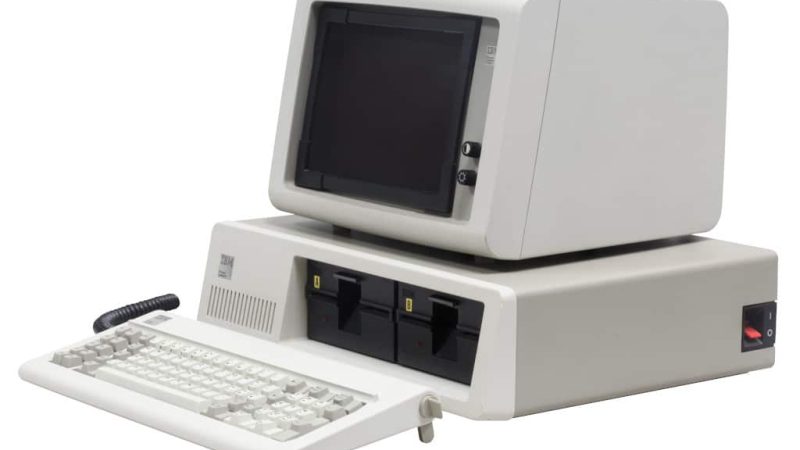A monochrome monitor is a type of computer display that presents images in a single color against a contrasting background. Before the development of color monitors, monochrome monitors were the standard display technology for computers, televisions, and early electronic devices.
Even though modern LCD and LED color screens have largely replaced monochrome monitors, they are still used in specialized applications due to their high contrast, sharpness, and low power consumption.
This article explores the history, features, advantages, and modern uses of monochrome monitors.
What is a Monochrome Monitor? (Definition & Meaning)
A monochrome monitor is a display screen that uses only one color (such as white, green, or amber) on a black background. Unlike color monitors, which use RGB (red, green, blue) pixels, monochrome monitors rely on a single phosphor color to display text and graphics.
Common Types of Monochrome Monitors
- Green Screen Monitors – Emit green text on a black background (popular in the 1980s).
Amber Screen Monitors – Use orange or amber-colored text instead of green.
White or Black & White Monitors – Display shades of gray, similar to black-and-white TVs.
Monochrome monitors were widely used in computers, terminals, and early gaming consoles before color displays became mainstream.
History of Monochrome Monitors
Early Development (1960s – 1970s)
- Monochrome CRT (Cathode Ray Tube) displays were introduced in the 1960s.
- Used in televisions, oscilloscopes, and radar screens.
- The first personal computers (like the Apple II and IBM PC) featured monochrome displays.
Popularity in the 1980s
- IBM’s Monochrome Display Adapter (MDA) (1981) became a standard for business computers.
- Green and amber screens became popular for word processing, coding, and finance applications.
- Used in text-based operating systems like MS-DOS and UNIX terminals.
Decline & Replacement by Color Displays (1990s – Present)
- With the rise of VGA (Video Graphics Array) and color CRT monitors, monochrome displays became less common.
- LCD and LED monitors gradually replaced bulky CRT-based monochrome screens.
- Today, monochrome monitors are used in specialized fields like industrial control systems, medical equipment, and military applications.
Advantages of Monochrome Monitors
- High Contrast & Readability – Monochrome monitors provide sharp text and graphics, making them ideal for coding, data entry, and reading large documents.
- Low Power Consumption – They require less energy compared to full-color displays, making them suitable for battery-powered devices.
- Minimal Eye Strain – Green and amber screens reduce eye fatigue, which is why they were favored for long hours of computer work.
- Longer Lifespan & Durability – Unlike modern LCDs, monochrome CRT monitors had longer lifespans and were highly durable.
- Cheaper & Simple Design – Because they use fewer components, monochrome monitors are cheaper and easier to maintain.
- Better Performance in Low-Light Conditions – Used in night vision, military operations, and aviation systems due to their superior visibility in dark environments.
Common Uses of Monochrome Monitors Today
- Point of Sale (POS) Terminals – Used in cash registers and billing systems.
Medical Equipment – Found in X-ray, ultrasound, and diagnostic displays.
Industrial Control Systems – Used in factories and automation processes.
ATM Machines & Banking Terminals – Provide text-based transaction displays.
Aviation & Military Displays – Used in radar systems, aircraft cockpits, and submarine controls.
E-Book Readers & E-Ink Displays – Monochrome technology is used in devices like Amazon Kindle for better readability and low power usage.
While color displays dominate modern computing, monochrome monitors still serve niche applications where clarity, durability, and efficiency are more important than color.
Comparison: Monochrome Monitor vs. Color Monitor
| Feature | Monochrome Monitor | Color Monitor |
| Number of Colors | 1 (Green, Amber, or White) | Millions (RGB Combination) |
| Contrast & Readability | High (Sharp Text) | Moderate (Can be affected by color blending) |
| Power Consumption | Low | Higher |
| Usage | Text-based work, medical, military, POS | Multimedia, gaming, general computing |
| Eye Strain | Less | Can cause eye strain in bright displays |
| Cost | Lower | Higher |
Are Monochrome Monitors Still Available?
Yes! Even though color screens dominate the market, monochrome monitors are still manufactured for specialized applications.
Some modern monochrome LCD screens are available for:
- Industrial & factory monitoring systems
- Retro gaming & vintage computer enthusiasts
- Electronic book readers (E-Ink technology)
If you need a monochrome display, you can find them from specialized hardware manufacturers or online retailers.
Conclusion
A monochrome monitor is a single-color display screen that was once the standard for computers and terminals before the rise of color displays. While they are no longer widely used in everyday computing, monochrome screens are still valuable in industrial, medical, and military applications due to their clarity, durability, and efficiency.
Understanding the history, benefits, and uses of monochrome monitors helps us appreciate how display technology has evolved over the years. Even in a world dominated by high-resolution color displays, monochrome monitors continue to serve specialized needs, proving that sometimes simplicity is better than complexity.
FAQs
1. What is a monochrome monitor used for?
A monochrome monitor is used for text-based computing, industrial applications, medical imaging, and military displays where high contrast and readability are important.
2. Are monochrome monitors still available?
Yes! They are still used in POS systems, banking terminals, aviation, and industrial machinery. Retro enthusiasts also collect vintage monochrome CRT monitors.
3. Why were monochrome monitors green or amber?
Green and amber reduce eye strain compared to white light. Green phosphors were more efficient and long-lasting, while amber provided a warmer and less harsh display.
4. What replaced monochrome monitors?
Color CRT, LCD, and LED screens gradually replaced monochrome monitors in the 1990s as computing became more graphical.
5. Can a monochrome monitor display images?
Yes, but only in shades of a single color. Early ASCII art, pixel graphics, and grayscale images were displayed on monochrome screens.
Also read: Coca Cola in a Green Can: History, Meaning, and Impact









